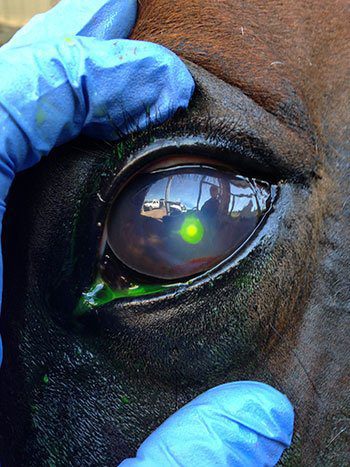
Tying up is a frustrating condition that occurs post-exercise. The condition can range from mild to severe. However, the result is the same – muscle stiffness that may limit the career outcomes of performance horses. In this article, we share five tips to manage tying up.
Exertional Rhabdomyolysis, commonly known as tying up, affects the striated muscles that allow movement in the horse. Following exercise, the muscles break down, resulting in mild muscular stiffness to muscle locking. In severe cases, the horse is left unable to move.
The condition can be divided into two categories:
• Acute Exertional Rhabdomyolysis (AER):
Most commonly caused by intense exercise that exceeds the horse’s current fitness levels, acute tying up is easier to diagnose and, thus, treat.
• Recurrent Exertional Rhabdomyolysis (RER):
In contrast, recurrent tying up is only seen intermittently, even following mild exercise, making it more difficult – and frustrating – to treat.
If you suspect typing up in your horse, a veterinarian will be able to assess the condition and give you a practical management plan to maximise your horse’s performance.
Dietary changes, exercise management, daily turnout and stress reduction are key to supporting horses with tying up.
Tip 1: Build fitness gradually
For any horse, and especially those prone to AER, a regular exercise program that aims to build fitness gradually is essential. Increasing exercise intensity over time will help to avoid incidences of tying up and support your horse throughout their competitive career.
Tip 2: Allow turnout daily
High stress levels have been linked to AER and RER, so provide your horse with regular turnout time, including with paddock mates. They should also receive 1.5-2% of their bodyweight daily in quality forage sources, such as hay and pasture, for improved gut health.
Tip 3: Remove starch sources
A low starch, high fibre, high fat diet is shown to have immense benefits for horses with RER. Fibre and fat are better sources of energy and will assist in reducing excitable or nervous behaviours commonly associated with starch.
Tip 4: Feed vitamin E and selenium
Vitamin E and selenium deficiencies have been linked to AER, but not RER. These natural antioxi-dants are very important for muscular health. For any horse with AER, their complete feed should contain adequate levels of vitamin E and selenium.
Tip 5: Consider supplements
Finally, electrolyte and bicarbonate supplements may be helpful. All horses should receive salt in their diet and have access to a free-hanging salt lick. Supplements that boost bicarbonate reserves in the muscles will assist in combating the build-up of lactic acid.
Click here to read some helpful advice about choosing supplements for your performance horse.



